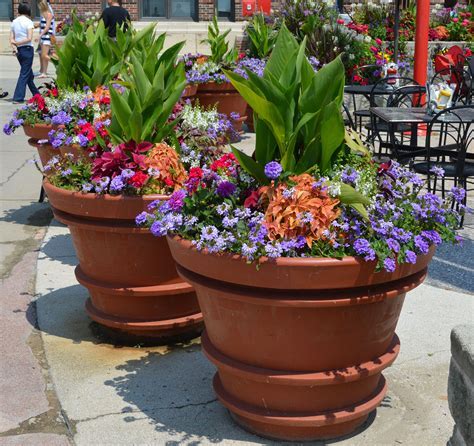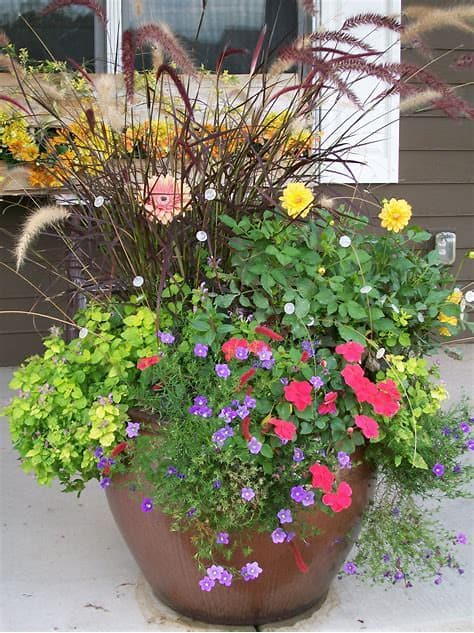
How to plant a container garden? Container gardens are an increasingly popular way to enjoy nature in the comfort of one’s own home.
Containers come in all shapes, sizes and materials making it easy to find something that reflects the style of your outdoor space. Plus, the options for plants and flowers that can be grown in containers are endless!
Gardening doesn’t need to take up a lot of space or time – with container gardening, there are endless possibilities.
If you’re wondering what type of things to put in your container garden, read on for tips and ideas on creating a stunning display with a variety of plants and flowers.
Key Takeaways
- Container gardens are a great way to add color and life to any outdoor space. They’re also perfect for people who have limited space or time for gardening.
- When selecting a container for your plants, choose one that is the right size for the plants you want to grow and make sure it has good drainage.
- To create a visually appealing container garden, select plants that require the same light levels and amount of water, and choose a color scheme that complements the plants and your outdoor space.
- Don’t overcrowd your plants in the container, as this can hinder their growth. Follow the recommended pot-to-plant ratios to ensure your plants have enough space to thrive.
- To keep your container garden healthy, make sure you water your plants regularly and fertilize them as needed. Also, be sure to prune your plants to keep them looking neat and tidy.
How to Plant a Container Garden?

Container gardening is a great way to add a splash of color and life to any outdoor space. Whether you’re looking for a bright focal point on your patio or porch, or just want to bring some greenery into your garden, planting a container garden is the perfect solution. With just a little extra effort, you can create an eye-catching arrangement that will thrive all season long.
Container gardening is easy and enjoyable with the right selection of plants and planter. To get started, pick a planter and mix of plants that complement each other, prepare the soil, arrange the plants in their own sections, water thoroughly, and enjoy!
1. Choose the Right Container
Terra-cotta and plastic containers are popular options when it comes to choosing pots for an outdoor space. These materials come in a range of shapes, sizes, colors and decorative designs, allowing customers to find the perfect pot for their needs.
2. Select Color Schemes and Plant Combinations
It is important to choose a color scheme and wisely combine plants when creating a container garden.
Planting in odd numbers and having at least one thriller, filler, and spiller plant can help create a visually appealing garden. It is also essential to select plants that require the same light levels and amount of water.
3. Limit the Number of Plants You Use
When planting container gardens, it’s important to avoid overcrowding your plants. If they’re too close together, their growth both above and below ground can be hindered. To reduce the risk of overfilling, follow these general pot-to-plant ratios:
10″ to 12″ pot can hold 3-4 plants
14″ to 16″ pot can hold 5-7 plants
16″ to 20″ pot can hold 6-9 plants
4. Fill the Container with Potting Mix
When gardening in a pot, two-thirds of the container should be filled with all-purpose potting soil. To reduce the amount of potting mix needed, use smaller containers and fill the space around them with potting soil.
For a container garden, consider covering the drainage hole with a shard of a broken clay pot. This will prevent the soil from washing away without blocking water from draining freely. Avoid putting rocks at the bottom of your pot as this can inhibit water flow.
5. Place Plants in Your Container
Planting is a simple process that involves squeezing the plant from its nursery container so the root ball can slide out, then setting them in the potting mix with the root balls a couple of inches below the container’s rim for easy watering.
Once all of your plants are in place, fill in around them with more potting mix, making sure that their stems are no deeper in soil than they were in their nursery containers.
Use your hands to press down lightly on the mix to eliminate large air pockets and ensure that everything is firmly in place. After this step is complete, you’re ready to start watering and caring for your new plants!
Conclusion
Container gardening is an easy and enjoyable way to bring greenery into any outdoor space.
To create a successful container garden, it is important to choose the right type of container, select plants that complement each other and have similar light and water requirements, limit overcrowding, fill the pot with potting mix, place the plants and root balls in the containers, and water them.